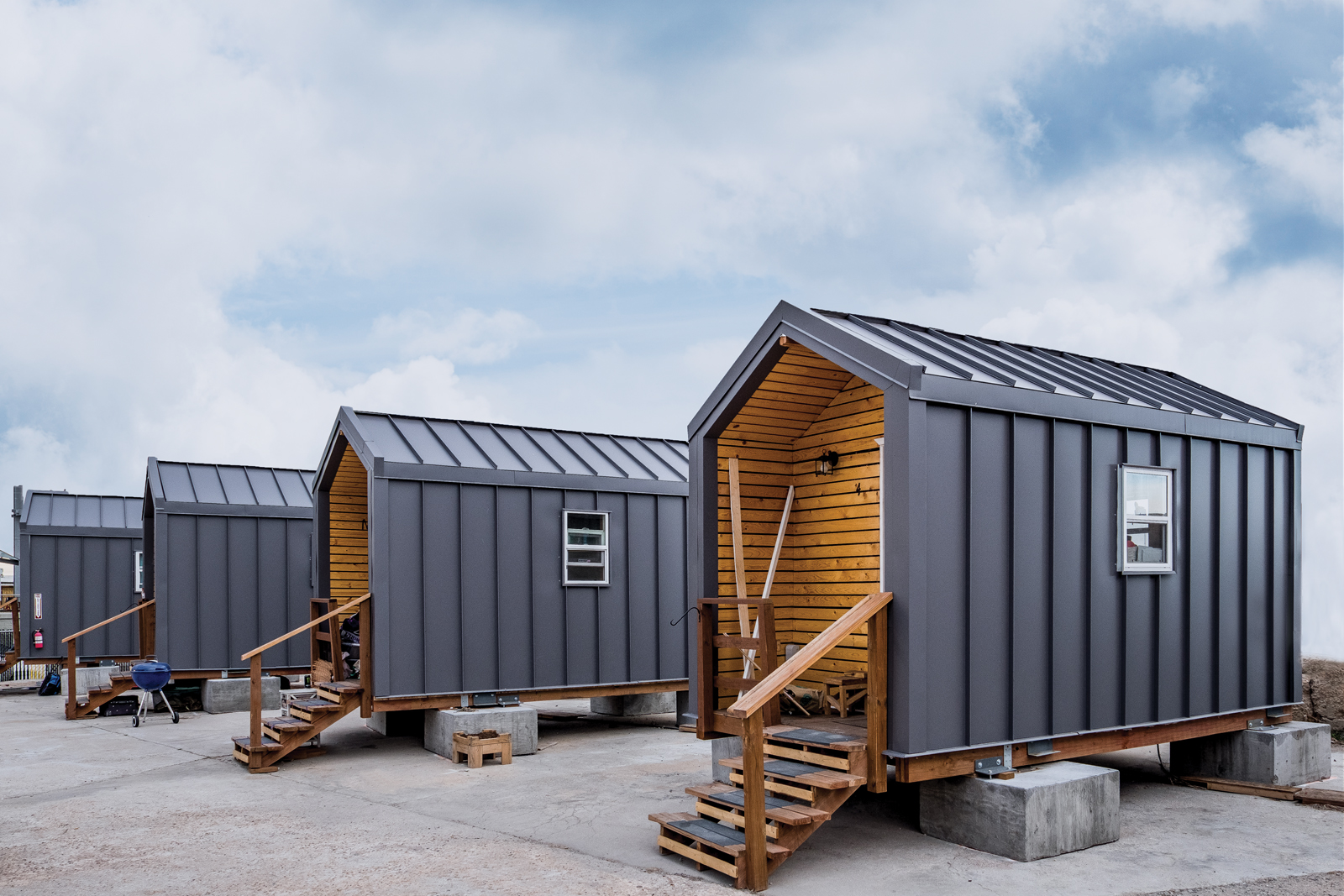The Local newsletter is your free, daily guide to life in Colorado. For locals, by locals.
Amanda Lyall met her husband when she moved to a new development in RiNo. They got married in the mountains and now share a home. On warm summer nights, they love to hang out with their neighbors.
Sounds like a typical Colorado story—but it’s not. That development, the Beloved Community Village, opened in July 2017 as a pilot-phase solution to Denver’s housing crisis. It was spearheaded by the housing advocacy group Colorado Village Collaborative and Radian Placematters, a nonprofit design firm that focuses on creating healthy, sustainable communities in underserved areas. “People have been marginalized by the urban camping ban and the affordable housing crisis, and there’s little dignity in being in a shelter system,” says Tim Reinen, executive director of Radian Placematters. “How do we provide a filler in that system for people who are being left behind?”

That’s where the “tiny home” design comes in: Fifteen people who were formerly homeless reside in the village’s 11 cabin-esque homes (each 8-by-12 feet) at 38th and Blake streets; the dwellings surround a communal yurt-style food-preparation space. Residents self-govern, meeting weekly in a village council to discuss day-to-day operations. “This is a mechanism to house people that’s easily deployable, replicable, and affordable,” Reinen says. “And, we wanted to be good neighbors to the surrounding community of RiNo, with its contemporary, clean lines and industrial, kind of gritty vibe, so these units had to reflect that aesthetic.”
The biggest hurdle: There’s no zoning for this type of project, which means it has a 180-day limit on the land—so the structures must be easy to relocate. The homes’ timber frames, porches, and standing-seam metal exterior walls and roofs—gabled, not flat, to lend more prominence—sit atop poured concrete foundations, all of which was dismantled over a week in January and transported to the current site mere yards away. “It was a logistical challenge to build a community that fills a need and disappears in six months,” Reinen says. Volunteers, including residents like Lyall, are working with the city to change the zoning. In the meantime, scaling up is a priority. “The goal is to have eight, 10, 20 villages dispersed throughout the city over the next few years,” Reinen says, “so we can start moving the needle on people who are on the street.”









